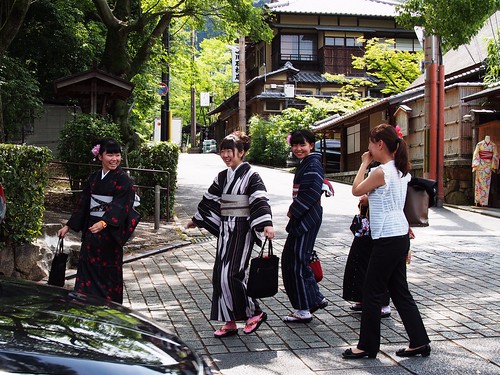
Back to the Japan trip. (I should clarify, I've been home for weeks now, just enjoying going through the photos and remembering all we did and saw.)
Even after the day of too much walking, we headed out walking for the morning again! This time we were a bit better targeted. We went through a street or two which used a real centre of ceramics production and still has a few great pottery shops. As we wandered through this hilly district there were other artisans shops as well, and several shrines (particularly higher in the hills) and touristy souvenir shops to go with them. Including kimono hire, kimono sales and some fabric too - old kimono fabric scraps was one of our shopping targets.
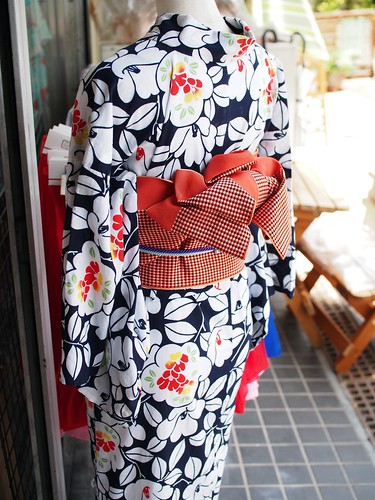
I really enjoyed all the pattern mixing I saw in the pairing of kimonos with obis. Oh, this is a shop dummy, not a headless person! Perhaps I could have framed this shot better...

Once we were wandering around Kyoto we started seeing these fellows everywhere. Tanuki is a welcoming and wealth-bringing icon but he has evolved from something that was originally more evil and scary, from older Chinese fox folklore. The reason we couldn't work out what animal he is (badger-ish chipmunk?) is because he is a combination of several elements and has changed over time. I can tell you his large scrotum symbolises both expanding wealth and luck with money. Perhaps you didn't really want to know that, but now you do. There is lots more to know about Tanuki, including that there is also a kind of native dog with the same name.
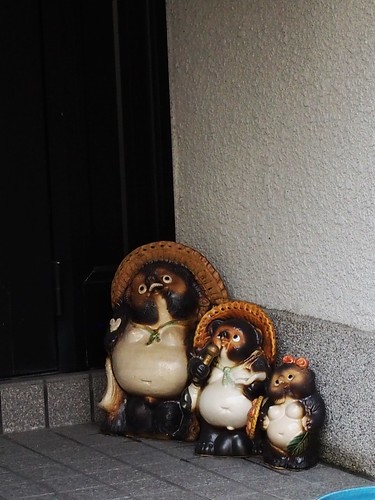
And why have one Tanuki on the doorstep when you can have three!
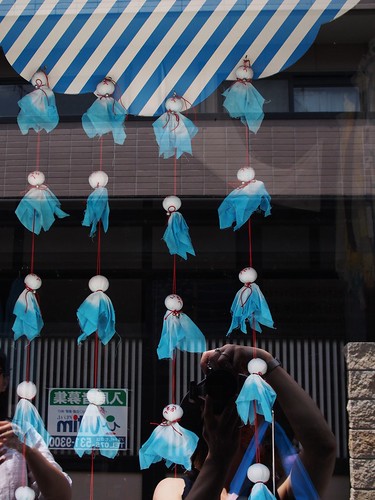
Camera talk interlude: after my only lens developed a problem a year and a half ago I moved on from my Canon 40D to something smaller and lighter, a 'mirrorless' (micro four-thirds) format. I settled on an Olympus (OMD EM5) with a kit lens and never looked back. I like the photos just as much and it's so much easier to carry around. And then just before we went to Japan I finally chose a prime lens - 25mm - and I love it SO MUCH. Its low-light performance is amazing. I still carried my zoom lens around Japan but never bothered to put it on. Using a prime was interesting and the limitation to one length not difficult to get used to at all - I think I managed to pick a sweet spot for me and the kind of pictures I like to take. I only occasionally felt too close, and I almost never missed having more zoom (often you can just walk closer).
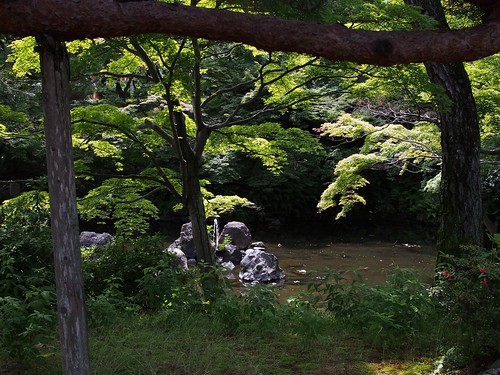
Another stone wall. Boring? I never get sick of them.

Later in the morning, on the way to meet an acquaintance for lunch at the Kyoto National Museum, we stopped at a packed vintage clothes/fabric/junk stall on the main road near the museum. My mum and sister both found treasures they wished to purchase and so we waited ...and waited (I ended up perching on a wall and knitting) for someone to come out and sell us things. We called out. Nothing, Eventually Mum and I went on to the museum. My sis came on a bit later, still having had no luck. Very strange. She was actually starting to imagine that the person who should be there might be injured or sick. After the museum visit we went back and did some more waiting. A passerby stopped to help, and she noticed a sign we had missed, with a phone number. Finally the shopkeeper was roused from somewhere (out back? upstairs?) and came out to take our money.
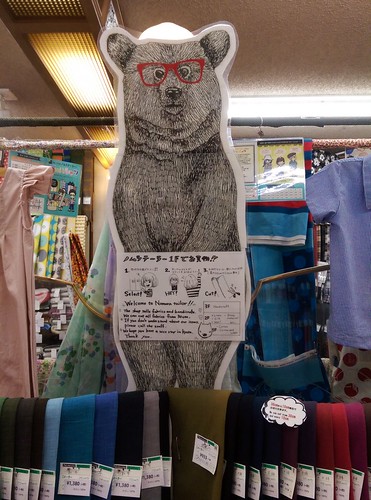
After that, my sister continued with some wandering on her own. Mum and I had shopping plans back in town but as the shops tend to be open later (at least til 7 or 8 - maybe this is a summer thing?) we first went back to the ryokan for a bit of downtime. Then we were off to Nomura Fabric Store - home of the bear - and a few blocks over to Avril for me. We had a little trouble finding it and got there 20 minutes before closing. And I had no real idea what I was walking into.
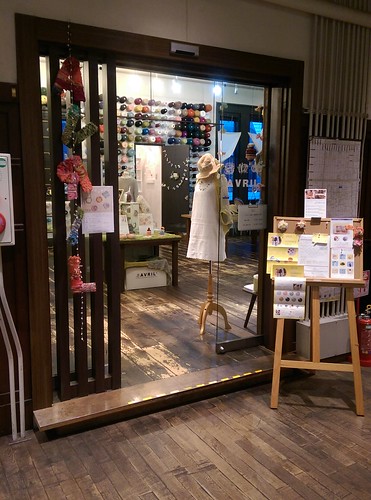
Avril! It's a beautiful store in an old building with very solid wooden floors and staircase. I walked in and all I could see was cones of yarn on all of the walls. I had little time and didn't know have the first idea what all the cones were about. (Yarn for knitting is usually in hanks, skeins or balls. It's not a hard and fast rule of course but cones would more often be finer yarn for weaving).
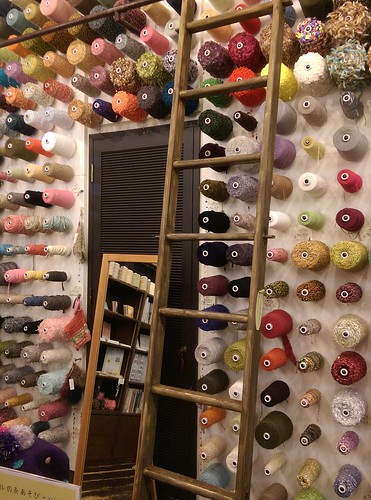
All the walls looked much like this!
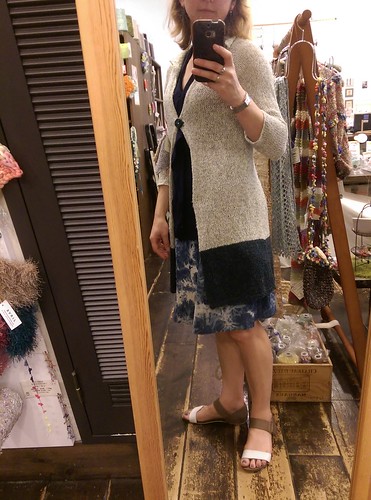
I don't usually take much interest in kits, but a kit was my saviour here. I fumbled through a rack of samples and tried on this cardigan. I don't normally think a long cardigan works for me but this seemed to play interestingly with my outfit. Note, there is a dark section at the bottom - it's much longer than it may look at first glance. I think I will need to adjust it a bit, making it a little shorter overall and bringing up the change between colours a bit higher too. But I still want it to be a longline cardigan as that is something different for me.
You can't really tell in this photo but the lighter colour in the kit was a pale greenish hue that wasn't very appealing to me. (I know, it just looks like oatmeal in the photo).
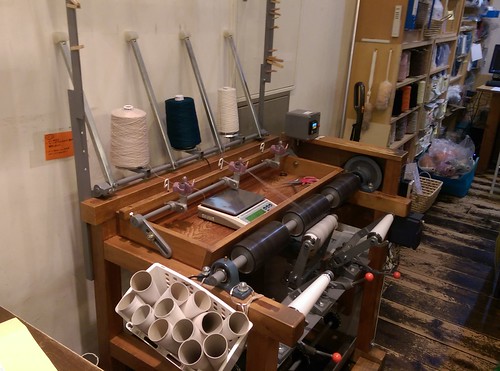
When I showed interest in the kit, the staff started to help me choose yarn. And here is where I got really confused. The ladies working there were really lovely and helpful - and they didn't speak English. I grasped that the yarn was a silk, cotton and linen blend. So why was I was being shown shade cards for separate silk, cotton and linen fibres? Was it not a blend, but a choice of one of these fibres? Finally after much patient miming, the walls of cones suddenly made sense. I was to choose three plys in any combination of colours and they would put them all together on a cone for me!
At this point I was super excited and also under pressure! I knew they had to close the shop, I knew we needed dinner (probably about an hour ago, really). I had to choose colours quickly and I never would have got there without Mum's help. She was very cool-headed for a hungry person. It was her brilliant idea to tie the two colour blocks together by including one teal strand in the lighter top section. I think it will be great. Winding up the yarn took no time (pic above) and then we just had to choose a button.
And now I just need to figure out how to interpret the Japanese pattern. One of the lovely Avril ladies did translate a few key words on the pattern for me. I know lots of people knit from Japanese books without actually knowing the language (thanks to the schematics commonly used and knowing just a few key terms). And if all else fails I might have to adapt a similar pattern to work with this yarn instead.
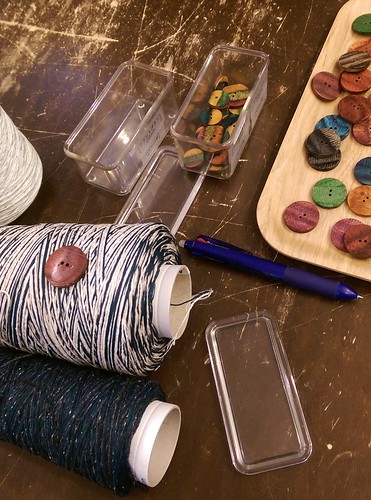
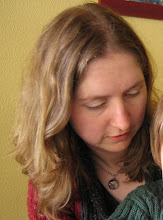
No comments:
Post a Comment